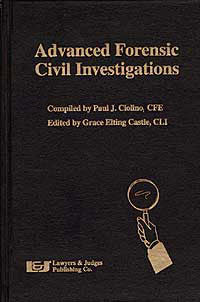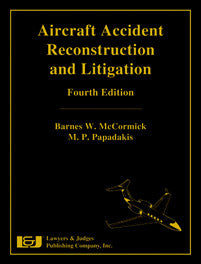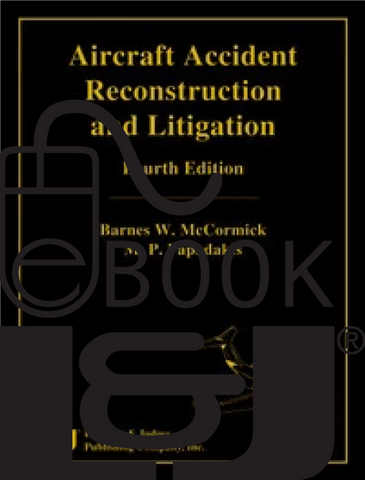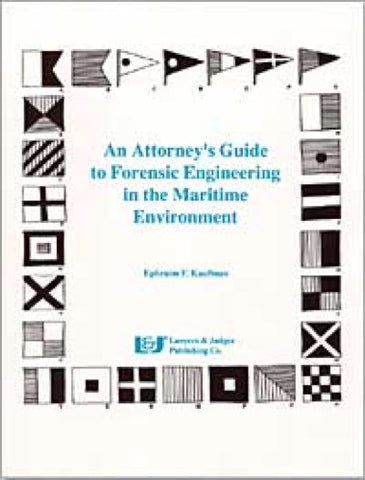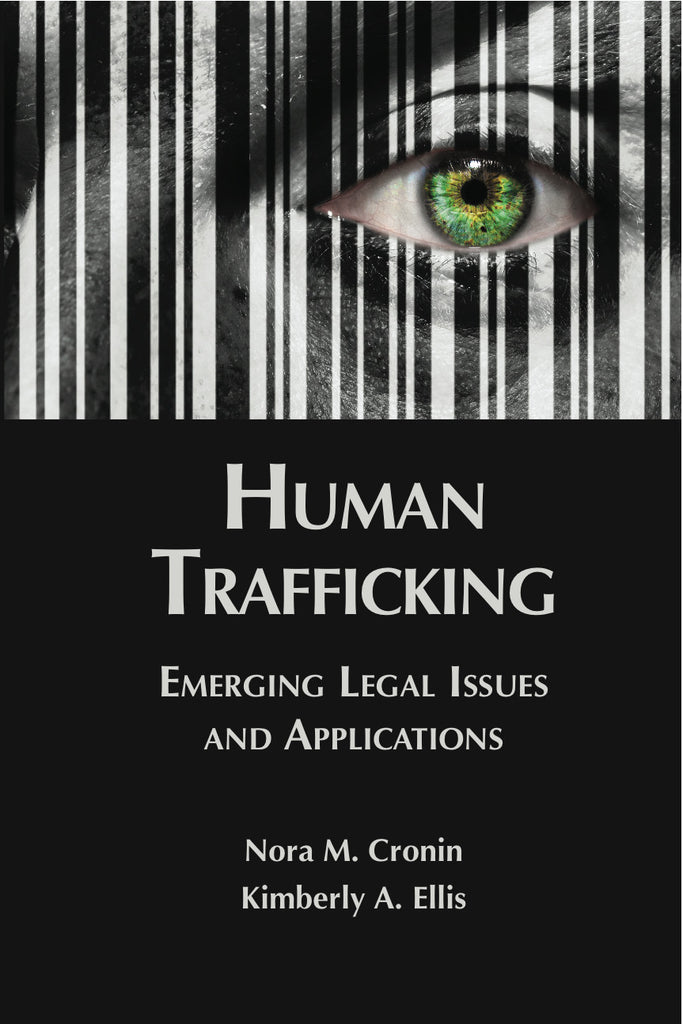
Human Trafficking: Emerging Legal Issues and Applications
- Editor: Nora M. Cronin and Kimberly A. Ellis. Contributors: Peter W. Blair, Jr.; Robin Boyle Laisure; Melissa L. Breger; Nicole Campion; Felicity Gerry, QC; Gonzalo Martinez de Vedia; Bryanne Perlanski; Fiona McLeod, SC; Julia Muraszkiewicz; Alan W. Scheflin; Catarina Sjölin, LL.M; Niovi Vavoula, LL.M.
- ISBN 10: 1-936360-22-5
- ISBN 13: 978-1-936360-22-2
- Copyright Date Ed: January 25, 2017
- Pages: 320 pages
- Binding Information: Softcover
- Size: 6 ✕ 9 Inches (US)
Human Trafficking: Emerging Legal Issues and Applications offers practical, tested, and cutting-edge approaches to addressing human trafficking and remediating its victims. It explores new digital technologies used to investigate the crime; tools for attorneys representing victims in criminal, labor, and immigration cases; and ways to help child victims of sex trafficking. This book proposes unique solutions to human trafficking in the United States, Australia, and Europe that can be applied elsewhere in the world. It explores the intersection of human trafficking with other phenomena such as cults, drug trafficking, human rights, and gender issues. Importantly, this book unveils the cutting-edge Social Influence Model for admitting evidence of undue influence and coercion into court when trafficking victims find themselves on the wrong side of a prosecution. Written for practitioners working in the courts and on the ground, Human Trafficking: Emerging Legal Issues and Applications is an essential tool for righting the wrongs of human trafficking.
Chapters include
- Labor Trafficking: The Garcia Case and Beyond (Gonzalo Martinez de Vedia)
- Human Trafficking in the Drug Trade: Lessons for Attorneys from the Mary Jane Veloso Case (Felicity Gerry, QC)
- The New York Approach: A Lawyer’s Guide to Human Trafficking Intervention Courts (Nicole Campion)
- Human Trafficking and Exploitation in Australia (Fiona McLeod, SC)
- Using Digital Technologies to Combat Human Trafficking: Privacy Implications (Felicity Gerry QC, Julia Muraszkiewicz, LL.M., and Niovi Vavoula, LL.M.)
- Human Trafficking in the Dark: Sex Trafficking on the Dark Web (Bryanne Perlanski)
- Using the New Social Influence Model (SIM) to Pursue Justice for Trafficking Victims (Nora M. Cronin and Alan W. Scheflin)
- Trauma In Sex-Trafficked Children (Melissa L. Breger)
- The Human Rights Argument in Human Trafficking: Duty to Identify Victims (Julia Muraszkiewicz)
- Gender Issues in Human Trafficking: Empowering Women and Girls Through Awareness and Law (Felicity Gerry QC and Catarina Sjölin, LL.M.)
- Human Trafficking and Cults (Robin Boyle Laisure)
Table of Contents
Foreword
Preface
Acknowledgements
Introduction
Part I: Human Trafficking in Context
Chapter 1: Labor Trafficking: The Garcia Case and Beyond
By Gonzalo Martinez de Vedia
1.1 The TVPA as a Sex-Trafficking-Driven Umbrella Law
1.2 Harvest of Shame
1.3 Governmental Abdication
1.4 Garcia: Emblem of a System
1.5 Promising Practices
Endnotes
Chapter 2: Human Trafficking in the Drug Trade: Lessons for Attorneys from the Mary Jane Veloso Case
By Felicity Gerry, QC
2.1 Human Trafficking
2.2 Drug Trafficking
2.3 Identifying Victims
2.4 Non-Punishment
2.5 An Attorney’s Role
2.6 Conclusion
Endnotes
Chapter 3: The New York Approach: A Lawyer’s Guide to Human Trafficking Intervention Courts
By Nicole Campion
3.1 The Problem: Traditional Courts and Their Harmful Effects on Trafficking Victims
3.2 The Solution: A Problem-Solving Approach
A. What Are Problem-Solving Courts?
1. Essential elements of problem-solving courts
2. History of problem-solving courts in the U.S.
B. New York’s Human Trafficking Intervention Courts
1. Getting a client’s case into New York’s Human Trafficking Intervention Court
2. Guiding a client after entering Human Trafficking Intervention Court
C. How Can the Human Trafficking Intervention Court Help a Client?
1. Services available through Human Trafficking Intervention Courts
a. How do attorneys play a role in the administration of these services?
2. Other legal remedies available: Immigration relief and vacatur
a. Case Study: Bronx, 2011
b. Case Study: Queens, 2013
c. Case Study: New York County, 2014
D. Potential Problems and Criticisms with the Human Trafficking Intervention Courts
1. How attorneys can help with potential solutions to current problems
E. Minor Clients who are Victims of Human Trafficking
3.3 Favorable Outcomes for Trafficking Victims
3.4 Conclusion
Endnotes
Chapter 4: Human Trafficking and Exploitation in Australia
By Fiona McLeod, SC
4.1 What is Trafficking?
4.2 What is Slavery?
4.3 The Position in Australia
4.4 Case Studies
A. R v Wei Tang
B. Ning’s Case
C. R v Kovacs
D. DPP v Ho
E. R v Rasalingham
F. Ram v D + D Indian Fine Food Pty Ltd.
4.5 Australia’s Responses to Human Trafficking
A. Removal
B. Justice
C. Restoration
1. State compensation schemes
2. Confiscation and reparation orders
3. Torts
4. Labour laws
5. The current framework in Australia
4.6 Resilience
4.7 The Private Sector: An Opportunity to Lead
4.8 Conclusions
Endnotes
Part II: Digital Aspects in Identifying and Investigating the Human Trafficking Case
Chapter 5: Using Digital Technologies to Combat Human Trafficking: Privacy Implications
By Felicity Gerry QC, Julia Muraszkiewicz, LL.M., and Niovi Vavoula, LL.M.
5.1 Human Rights and Human Trafficking
5.2 Human Rights and Technology
5.3 Technology and Human Trafficking
5.4 Defining the Issues
A. Technology
B. Human Trafficking
C. Privacy and Data Privacy
5.5 Relationship Between Human Trafficking and Privacy
5.6 Technological Advances
A. Location Tracking
B. Data Collection
C. Drones
D. Biometrics
5.7 Conclusion
Endnotes
Chapter 6: Human Trafficking in the Dark: Sex Trafficking on the Dark Web
By Bryanne Perlanski
6.1 How the Internet Facilitates Human Trafficking
6.2 The Dark Web
6.3 The Process of Online Criminal Sex Trafficking Cases
A. Step 1: Identifying Sex Trafficking
B. Step 2: Investigation
C. Step 3: Federal Prosecution
6.4 What Can Practitioners Do to Aid in This Process?
Endnotes
Part III: Special Issues
Chapter 7: Using the New Social Influence Model (SIM) to Pursue Justice for Trafficking Victims
By Nora M. Cronin and Alan W. Scheflin
7.1 Introduction: Trafficking Victims Are Victimized Twice—By the Trafficker and by the Legal System
7.2 Force, Fraud, and Coercion in the Context of Human Trafficking
7.3 Getting to the Undue Influence Defense in Courts
A. Distinguishing Undue Influence and Brainwashing
B. Solution: Undue Influence as a Defense
C. The Freedom of Choice Paradox
7.4 Use of the Concept of Undue Influence in Court
A. Social Influence Model (SIM)
B. Using the SIM to Present Evidence in a Trafficking Case
7.5 Conclusion
Endnotes
Chapter 8: Trauma In Sex-Trafficked Children
By Melissa L. Breger
8.1 The Epidemic of Child Sex Trafficking
8.2 The Therapeutic Foster Care Model in the United States
8.3 How Sex-Trafficked Children and Abused Children Are Similar in the Trauma Endured and Rehabilitation Needed
8.4 Potential Obstacles to Healing Sex-Trafficked Children in Therapeutic Foster Homes
A. Children’s Needs are Not Uniform
B. Critiques of the Overall Foster Care System
8.5 Conclusion
Endnotes
Chapter 9: The Human Rights Argument in Human Trafficking: Duty to Identify Victims
By Julia Muraszkiewicz
9.1 Introduction
9.2 Challenges of Identifying Victims of Trafficking
9.3 European Frameworks for Victim Identification
A. The European Union
B. The Council of Europe
9.4 Case Studies
A. Rantsev v. Cyprus and Russia
1. The facts
2. Lessons learned
B. C.N. v. the United Kingdom
1. The facts
2. Lessons learned
C. L.E. v. Greece
1. The facts
2. Lessons learned
9.5 Other Solutions to Identification
9.6 Conclusion
Endnotes
Chapter 10: Gender Issues in Human Trafficking: Empowering Women and Girls Through Awareness and Law
By Felicity Gerry QC and Catarina Sjölin, LL.M.
10.1 The Effect of Human Trafficking on Women and Girls
10.2 Protection and Empowerment
10.3 The Scope of the Labour Problem
10.4 Lessons from Outside the U.S.
10.5 U.S. Action and Strategies
10.6 Suggestions for a Solution
10.7 A Holistic Approach
A. The Istanbul Convention
B. Response by the Private Sector
10.8 Conclusion
Endnotes
Part IV: Additional Legal Applications for Trafficking Laws
Chapter 11: Human Trafficking and Cults
By Robin Boyle Laisure
11.1 Cults: An Overview
A. Four Processes of Indoctrination
B. Five Types of Cults
C. Cults and the Law
1. U.S. law strongly protects religion
2. U.S. evidence rules impair ability to introduce evidence of brainwashing and coercion
11.2 Human Trafficking
A. Laws Prohibiting Human Trafficking
1. International laws
2. Protections for trafficking victims under international law
3. Legal effect of the international treaties
4. U.S. laws prohibiting human trafficking
5. How U.S. federal law is changing
B. Cults Compared with Human Trafficking Rings
1. Physical force, threats, malnourishment
2. Psychological coercion and surveillance
3. Labor and profit motives
4. Fraudulent recruitment
5. Isolation
6. Shaming Tactics
11.3 Using Human Trafficking Strategies to Combat Destructive Cults
A. Applying Criminal Trafficking Statutes to Prosecute Cult Leaders
B. Suggestions for Expanding Resources to Identify and Support Cult Victims
1. Violence against women
2. Training programs
3. Providing victims’ rights to former cult members
4. Helping to identify child victims
C. A Case in Point
Endnotes
Appendix 1: Side-by-Side Sex Trafficking Penal Law Comparison
Appendix 2: Side-by-Side Labor Trafficking Law Comparison
Appendix 3: Resources
About the Authors
Index

